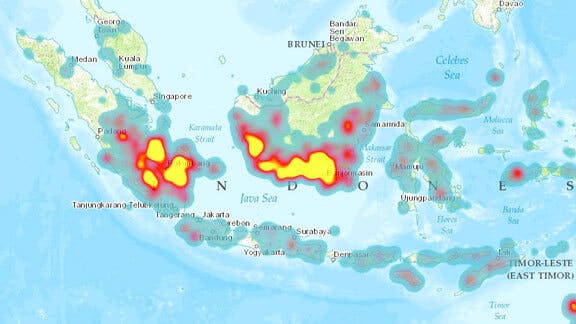Australia found complicit in crimes against humanity

The Indonesian army constructed a sustained and false narrative of acts of extreme brutality and conspiracy against the state in order to create a pretext for the anti-communist purge and slaughter, which was quickly launched [and] the diplomatic and propaganda apparatuses of the US, Britain and Australia propagated this version of events with the purpose of manipulating international opinion in favour of the Indonesian army (and against President Sukarno), in the full knowledge that the army was preparing to, and later had already begun to, carry out or encourage such killings on a massive scale …
The UK and Australia conducted a sustained campaign repeating false propaganda from the Indonesian army, and that they continued with this policy even after it had become abundantly clear that killings and other crimes against humanity were taking place on a mass and indiscriminate basis. On balance, this justifies the charge of complicity in the above crimes against humanity.
It is well established that Australia … ran a sophisticated propaganda operation, with information favourable to the Indonesian army being relayed by its embassy in Jakarta to Canberra and disseminated through various media including Radio Australia. A recent study notes that the Australian Department of External Affairs had always taken a “keen interest” in the way in which Radio Australia reported events in Indonesia, and that after 30 September the Department “received and acted” upon advice from the Australian ambassador in Jakarta, Keith Shann, who in turn “received advice from the Indonesian Army on how it wanted the situation in Indonesia reported”.
The Department sought to direct Radio Australia in these matters and was also successful in “convincing [Australian] newspaper editors to report and editorialise in a manner sensitive to the Department’s concerns”.
Another study relates in detail how Shann was approached on 9 November 1965 “by an unnamed colonel from the army’s Information Section, who told him that Radio Australia should ‘mention as often as possible youth groups and other organisations, both Moslem and Christian’ that were involved in anti-communist actions (thus clearly hoping to dilute the army’s culpability)” … Shann [is reported to have] concluded his report to Canberra “with the comment that he could ‘live with most of this, even if we must be a bit dishonest for a while’. Radio Australia was also told to avoid ‘giving information to the Indonesian people that would be withheld by the army-controlled internal media’, to avoid compromising the army’s position …”
Information was also passed regularly to Canberra from the Australian embassy in what was described as “the methodical slaughter of PKI [Indonesian Communist Party] prisoners”. This was presumably the basis for a remark in July 1966 by the Australian prime minister, Harold Holt, who when asked about events in Indonesia commented that “with 500,000 to a million communist sympathisers knocked off … I think it is safe to assume a reorientation [in Indonesia] has taken place”.
The mass killings were also described in a number of media reports, although these did not always receive prominence when published. Examples include a vivid report in Melbourne’s Age in January 1966 by journalist Robert Macklin, who described what he and his wife had witnessed in Bali: “We saw four villages where every adult male had been killed … We saw mass graves in each of which up to 10 Communist men and women had been packed after being stabbed to death”.
In seeking to explain the widespread indifference to the human suffering in Indonesia, academic studies of this period place these events within the broader international context of cold war, heightened in Asia at the time by the war in Vietnam. Gabriel Kolko has observed that “Indonesia by late 1965 presented US strategy in Southeast Asia with a danger at least as great as Vietnam” because of the logic of the “domino theory” which saw communism as a threat to be opposed, even when as in Indonesia it took a peaceful form.
Thus, “the events of September 30 created a small challenge but also an enormous opportunity to resolve America’s dilemmas by directing the military’s wrath against the Communists” … The Indonesian army … saw the opportunity for a bargain, asking “how much is it worth to the US for the PKI to be ‘smashed’?”
Both [the UK and Australia] shared the US aim of seeking to bring about the overthrow of president Sukarno … in extending their propaganda operations to legitimise the false propaganda of the Indonesian army after 30 September (and in the UK’s willingness not to take military advantage of the situation), both governments evidently hoped that this would assist the army to eliminate the PKI as well as remove Sukarno.
They continued with this policy even after it had become abundantly clear that killings were taking place on a mass and indiscriminate basis. On balance, this appears to justify the charge of complicity.
The claim that the events in Indonesia were too obscure or confusing to be understood at the time has no merit. The countries referred to above were fully aware of what was taking place through their diplomatic reports, from contacts in the field and accounts in Western media.
Nor were the mass killings a secret to the international community in general, even if they were only reported intermittently. Yet there is no record that any of the governments considered above made the slightest attempt to urge restraint upon the Indonesian government or army.